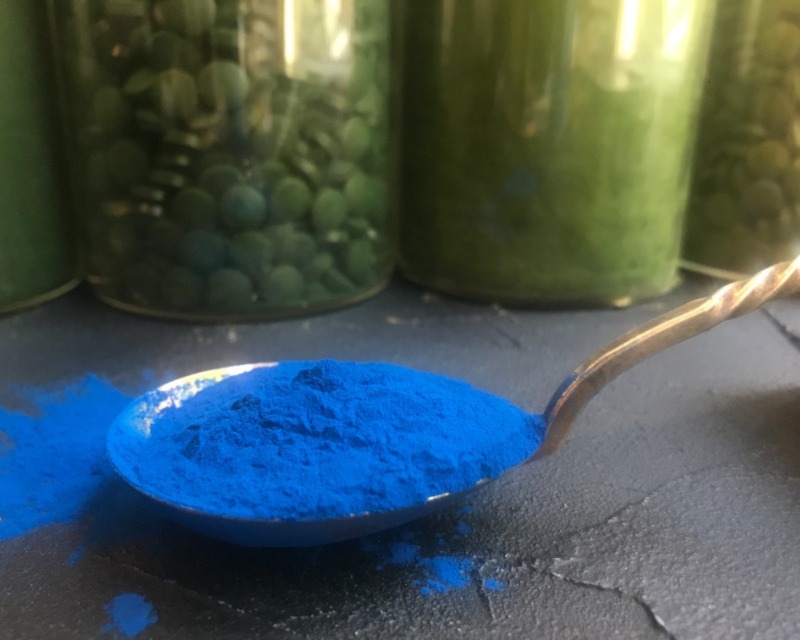Organic blue spirulina powder
From 13.80€
Blue spirulina and green spirulina are often confused but they come from different types of algae and have different properties.
Main differences:
– Blue spirulina is derived from a specific species of blue-green alga – Arthrospira platensis. Green spirulina is a common spirulina powder obtained from green-coloured Arthrospira platensis or Arthrospira maxima species.
– The main difference between blue and green spirulina is the pigment and colour. Blue spirulina gets its intense blue colour from the pigment phycocyanin, a blue pigment with antioxidant properties. Green spirulina gets its green colour from a combination of chlorophyll (a green pigment) and other pigments.
– Both blue and green spirulina are rich in nutrients and vitamins, minerals and protein. The content of these nutrients, such as protein and vitamin B12, may be similar when derived from similar types of algae, but the exact nutrient composition varies depending on growing conditions and processing methods.
– Blue spirulina is mainly used as a natural food colouring to give foods and drinks a bright blue or turquoise hue. Green spirulina, on the other hand, is commonly used as a food supplement due to its rich nutrient profile. It is often available in powder or capsule form and is commonly consumed for its potential health benefits. While green spirulina is more appreciated for its health benefits, blue spirulina has many similar properties: Antioxidant and anti-inflammatory properties – Phycocyanin, the active component of blue spirulina, has powerful antioxidant properties that help protect cells from oxidative stress and free radical damage. Phycocyanin also acts as a natural detoxifier, helping to remove toxins from the body. Because spirulina contains chlorophyll, it helps regulate the digestive system and promotes the growth of healthy bacteria in the gut. Vitamins C, E and B6 stimulate the production of white blood cells. Blue spirulina is rich in protein, calcium, magnesium, zinc and selenium, vitamins A, C, E and B.
Consumption
: sinine Spirulina has a relatively mild flavour, described as slightly earthy or grassy, with subtle seaweed notes. Compared to green spirulina, the flavour is much weaker, but it can vary depending on the concentration and the ingredients it is mixed with. Blue spirulina can be used in several ways: to add a bright blue or turquoise colour to foods and drinks, or to for desserts, cocktails, smoothies and pastries. There is no universally prescribed standard dosage for dye, so start with a small pinch or about 1/4-1/2 teaspoon of blue spirulina powder and adjust as needed. Think about the suitability of the flavour. Using too much blue spirulina can cause a bitter taste, so it is better to use it in moderation.
Attention
– s
pirulina is not recommended for use in pregnant or breastfeeding women, or in people with autoimmune diseases.
The information provided here should not be interpreted as a recommendation for treatment or other types of health problems. We encourage you to make personal health decisions after evaluating different sources of information.
100% Organic blue spirulina powder
Energy value 1475 kJ / 352 kcal
Fats <0,1 g
- of which saturated fatty acids <0,1 g
Carbohydrates 3,1 g
- of which sugars 3,1 g
Fibre 4,5 g
Protein 84 g
Salt 2,9 g
Store in a dry and cool place, protect from direct sunlight and do not freeze.











